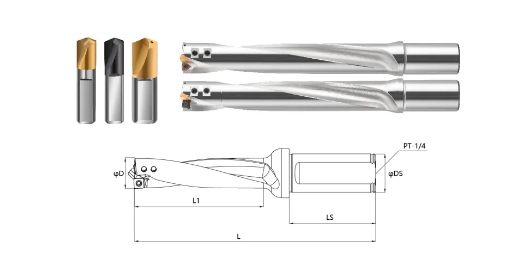High Speed Steel twist drills have maintained a consistent presence in the metalworking world due to their broad range of applications and dependable performance. From general construction tasks to maintenance work, these drills deliver stable cutting results across many materials.
One of the reasons for their widespread use lies in their ability to maintain a sharp edge at elevated temperatures. This property allows them to perform well under continuous load without rapid degradation. Compared to other tool materials, HSS strikes a favorable balance between hardness and resistance to impact, which is particularly valuable in variable-speed drilling.
HSS twist drills are usually produced with standard 118-degree or 135-degree point angles, providing options for different types of surfaces. The 118-degree point is suited for softer materials and easier centering, while the 135-degree variant offers greater resistance to walking on harder surfaces. This variety helps users select the appropriate geometry for the job at hand.
These drills also come in various lengths and diameters, including jobber-length and stub-length types. The choice between them depends on hole depth, tool rigidity, and workspace limitations. Regardless of configuration, the fundamental design of the twist drill remains focused on delivering smooth chip evacuation and consistent hole quality.
While some specialized applications may benefit from carbide or cobalt tools, HSS remains a logical choice for everyday drilling due to its accessibility and ease of handling. Users can resharpen HSS drills with relatively simple equipment, further reducing replacement frequency and material waste.
For enhanced durability, some HSS twist drills are coated to minimize friction and extend service life. Still, uncoated versions are often sufficient for light-duty or intermittent tasks. The ability to handle a broad spectrum of materials without extensive tool changes makes HSS twist drills a practical solution for technicians and machinists.
The enduring appeal of Speed Steel twist drills lies in their adaptability. Their role may not always be specialized, but their utility remains clear across a wide range of industries and applications.
